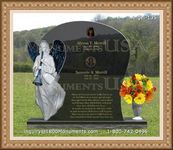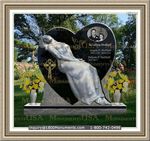|
Basics To Learn When Writing A Memorial Epitaph
When making final arrangements for someone who has passed away, there are a lot of details that require attention. These duties generally fall to family members of the deceased and may be handled by a single person, or the responsibilities may be distributed to make it easier. One such task is writing an appropriate epitaph for the gravestone.
This is the information that is inscribed on the gravestone, or commemorative plaque, of one who has passed away. The main purpose for it is to tell visitors a little something about the person interred on that spot. This tribute can be created in numerous different styles all depending on the author and the personality of the honoree.
There are some things that practically each grave marker will have in common. Nearly all will contain the person's full name and the dates that encompassed their life. Though a good many individual's choose to stop at just that basic information, others will opt to say a little extra by including statements, sentiments or personal remarks.
Traditionally, these inscriptions are short, touching sentiments stating what the individual meant to those who loved them or wishing them a peaceful rest. Sometimes they attest to what a loving spouse, parent, child or sibling they were, or mention their time in military service. Another popular choice is to use their favorite religious scripture.
A lot of people are choosing to design their own headstone. The primary benefit to this is that they can be sure that their last impression will be one they are comfortable leaving. It allows a bit of freedom, for example, for a person who was known for their sense of humor to be entertaining and witty with their final remarks.
Those who write their own might also like to use this as a platform to impart a last bit of wise advice to others. Often this involves encouraging people to be happy and live life well. One can be as creative as they wish with their final statement.
|
|



























